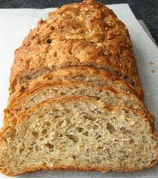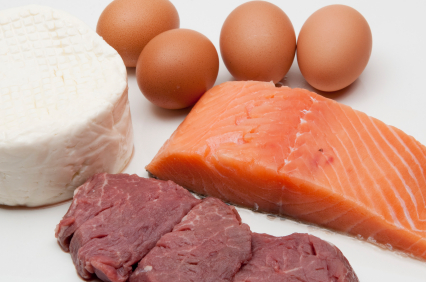- Home
- Our story
- Nutrition Quickies
- Products
- Ingredients
- Articles
- Success Stories
- Contact Us
- Timeless Radiance
- JayLab Pro Prosta-7
- BloodFlow Guardian
- VG-6
- Ultimate Sleep Solution
- Fermented Turmeric
- Collagen Complex
- LeptiSense
- Ultra-Cleanse Detox
- Krill oil
- Probiotics
- Advanced Joint Support
- Gluco Guardian
- Multi-vitamin (Active Core Complex)
- Renewal for men (T20)
- Protein powder
- Combo-packs
- Login
How Deceptive Labeling Is The #1 Issue You're Currently Facing
Table Of Contents:
Intro
Claim #1
Claim #2
Claim #3
Claim #4
Claim #5
 The FDA and manufacturers have once again been in the spotlight this week.
The FDA and manufacturers have once again been in the spotlight this week.
Manufacturers are stating that the FDA is hindering their amendments, as well as their lucrative businesses.
The FDA, however, is supposed to have our backs when it comes to products that are healthy and good for us.
Although there is a lot more work to be done, we are doing a much better job when it comes to deceptive labeling.
Or are we?.
Claims such as “fat free," “trans fat free," and “helps to improve immunity,” are now coming under closer scrutiny than ever before.
But those are just some of the more popular ones. Here are some others that could be posing problems for you and your health:
Claim #1: Made With 100% Whole Grain
One of the biggest claims when it comes to whole wheat or whole grain products is that the product is made with whole grains. 
The whole grain part, which contains wheat germ and high levels of fiber, are usually processed away, leaving you with bleached wheat flour.
A product needs to have 20% whole grains in order for you to get the heart-healthy benefits from whole grain ingredients.
Most whole grain products fall short of this mark, usually ranging between 5-10%, which is far lower than the 20% that is recommended.
Next time, flip the product over and be sure that the first ingredient is whole grain flour or some form of whole grains.
This way you can be sure that you are getting the associated health benefits.
Claim #2: Made With 100% Real Fruit
 Most people have heard the phrase 5-2-1-0, which was coined during the years of rising youth obesity.
Most people have heard the phrase 5-2-1-0, which was coined during the years of rising youth obesity.
The 5 in 5-2-1-0, stands for 5 servings of fruits and vegetables per day, which is great if you are using canned, frozen, or fresh fruit.
Products that claim they are made from 100% real fruit, however, need to be examined closer and with a much more observing eye..
Not only do many of these products contain little (or no fruit or fruit juice in them), but many are made with artificial fruit flavors.
Some products have emerged on the market making the same such claim, but use fruit puree.
You are getting more real fruit added, but you are also getting more sugar, plus you're eliminating the good part of the fruit, which is what you get the healthy benefits from.
Claim #3: Trans-Fat Free
Some products claim that they are "Trans-Fat Free." 
But:
In order for a product to be labeled trans-fat free, you would naturally assume that it should contain ZERO trans-fats, right?
Not really! A product only needs to contain 0.5 grams or less of trans-fats to be considered trans-fat free.
One of the biggest misleadering claims in food labeling is how many products claim they are trans-fat free, but contain high levels of saturated fats, which naturally contain trans fat.
Saturated fat can come in two different forms, natural and artificial.
The natural kinds are found in lean meats and some lower-fat dairy products, which should not overly concern you. But the artificial kinds, which can comprise a good majority of people's diets, may contain high levels of trans fats.
Claim #4: Front Of Package Claims
There has been much debate lately on front-of-the-package labeling.
On the front of boxes, manufacturers are allowed to make health claims about their product, which most of the time is fine if they used enough of the nutrient to support that claim.
However, many of the products may not actually contain the ingredients listed on the label (or could contain some that aren't on the label).
This is true for some kid’s cereals, and the FDA is hearing about it now.
Most cereals claim they are healthy, but may contain way too much added sugar and other artificial fillers that make the product both unhealthy and, in some cases, higher in calories.
Claim #5: No Added MSG
.jpg) MSG, or monosodium glutamate, is an additive that makes food taste better, and occurs naturally in some foods.
MSG, or monosodium glutamate, is an additive that makes food taste better, and occurs naturally in some foods.
However, MSG may also lead to many health risks that most people do not know about.
Foods that are said to have “no added MSG,” or “No MSG,” can be labeled such because the manufacturer did not add any additional MSG to the product.
Instead they added some form of hydrolyzed protein, which could contain high levels of MSG.
For those of you who are unfamiliar with the term “hydrolyzed,” this means that proteins are either treated with acid, or are treated with enzymes, which will contain some salts of free amino acids including glutamate, which is a main ingredient in MSG.
The FDA is starting the slow process of tightening their restrictions on such deceptive claims in the food industry.
Manufacturers, in turn, are fighting tooth and nail at eliminating these restrictions, claiming they are hindering their First Amendment rights to Free Speech.
Whatever happens in the battle, our health is of vital importance.
Learning to correctly read a label, or the FDA mandating the labels be easier for us to read, will hopefully lead to better choices on what you buy and what ends up on your dinner table..
So next time you are shopping, stick with whole food choices with more nutritional value and higher quality proteins and essential fatty acids, such as meat, chicken, and fresh fruit in order to avoid some of the deceptive labeling in the food industry.

Can THIS TORCH Stubborn Belly Fat? (can you guess what it is?)
The #1 Secret To Turn Back The Hands Of Time

The World's Top Belly Slimming Foods

